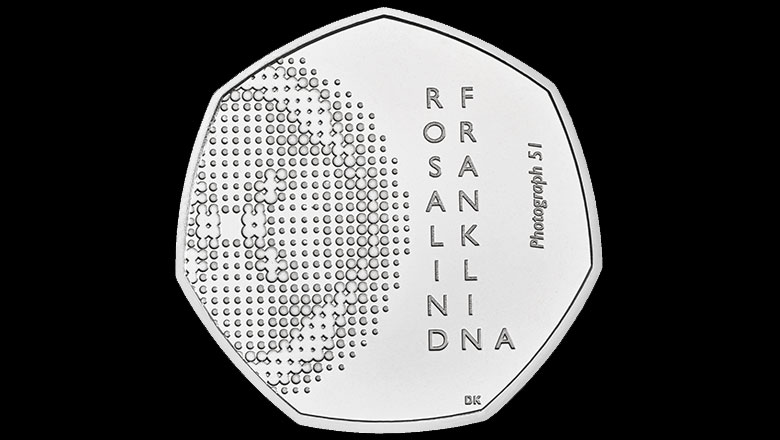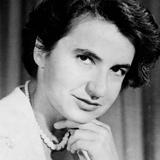20 July 2020
Rosalind Franklin's legacy celebrated with commemorative 50p coin
The Royal Mint in collaboration with King’s has today launched a commemorative 50p coin celebrating what would have been Rosalind Franklin’s 100th birthday.

Best known for her research into DNA which she undertook while at King’s, Rosalind was a world authority on the three-dimensional structure of viruses, as well as coal and graphite.
Born in London on 25 July 1920, Rosalind Franklin attended and excelled at St Paul’s Girls’ School and was determined to become a scientist. In 1938, she fulfilled her childhood ambition, taking up a place at Newnham College, Cambridge, to study Natural Sciences, specialising in Chemistry.
In 1947 Rosalind started a new job at the Laboratoire Central des Services Chimiques de L'État in Paris. Continuing her research into coal and graphite, she became an expert in X-ray crystallography. A few years later, she joined the Medical Research Council Biophysics Research Unit at King’s College London, applying these techniques to DNA. It was in May 1952 that Rosalind and Raymond Gosling successfully produced Photograph 51 by shining an X-ray beam for more than 60 hours at right angles onto a sample of DNA fibres; from this image a three-dimensional model of DNA could be determined.
Rosalind Franklin’s brilliant mind and tireless dedication enabled breakthroughs in multiple fields. Tragically she passed away from ovarian cancer aged just 37, denying her the awards and recognition that would surely have come during her lifetime.
President and Principal of King’s, Professor Ed Bryne said: “As a pioneering scientist at King's College London in 1952, Rosalind Franklin captured 'Photo 51' - the world's most important photograph revealing the secret structure of the DNA molecule which governs heredity. I am delighted that today she has been formally recognised for her ground breaking and wide-ranging work which has allowed and inspired generations of students, scientists and physicists at King's and beyond to delve deeper into biophysics, human heredity and to develop treatments for genetic diseases. This coin represents the broader societal recognition she so richly deserves.”
The coin has been designed by Royal Mint graphic designer David Knapton. Inspired by the historical injustice of the failure to credit Rosalind Franklin’s role in determining the structure of DNA, David uses the printing techniques of the era to restore her rightful legacy. By including her name in the design along with Photograph 51, the ground breaking image she captured of the building blocks of life, David places Franklin at the heart of the DNA story.
He said: “A straight replication of Photograph 51 wouldn’t have worked on a coin, so I decided to reflect the printing techniques of the era. To restore Franklin’s rightful role, it was important to include her name. Adding an A to a third column to line up with the last letters of Rosalind and Franklin to spell DNA felt like a small ‘penny drop’ moment. I can only imagine how Franklin felt when she made her breakthrough discovery.”
Clare Maclennan, Divisional Director of Commemorative Coin at The Royal Mint said: “We are delighted to be continuing our ‘Innovation in Science’ series with a second coin celebrating what would have been Rosalind Franklin’s 100th birthday. Using printing techniques from the era of Franklin’s work, the coin’s design captures the graphic representation of Photograph 51, arguably one of the most important images in biological science demonstrating the double helix structure of DNA. This commemorative 50p coin is truly a fitting tribute to a scientist who was instrumental in enabling one of the greatest discoveries of the twentieth century.”
The coin is available in limited-edition Gold Proof, Silver Proof and Silver Proof Piedfort, as well as a Brilliant Uncirculated edition.

